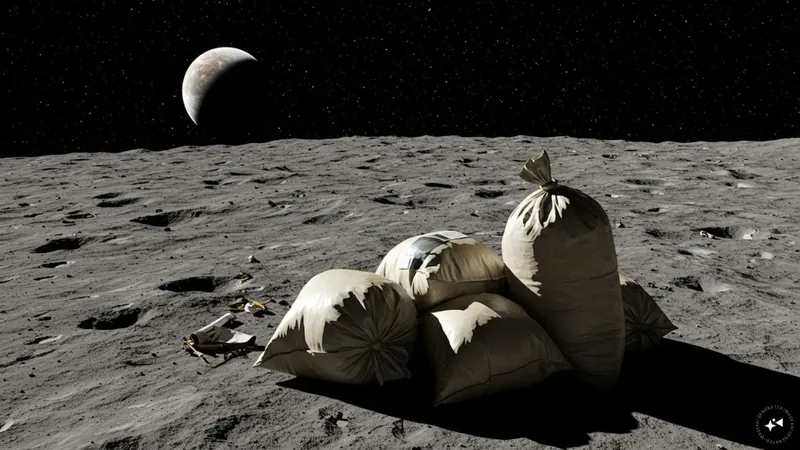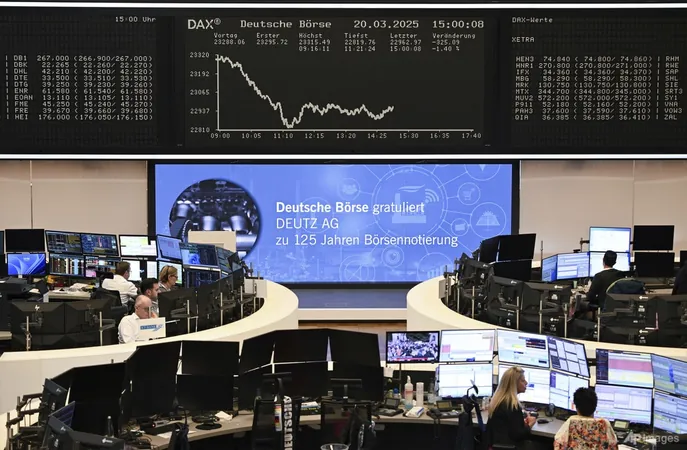
NASA's $3 Million Challenge: Can You Help Recycle Astronaut Waste in Space?
2025-04-11
Author: John Tan
An Out-of-This-World Challenge!
NASA is on the hunt for innovative thinkers to tackle an unusual yet pressing issue: recycling astronaut waste left on the moon! The space agency has announced a staggering $3 million reward for anyone who can devise a solution to manage human waste—specifically those 96 bags of faeces, urine, and vomit abandoned by Apollo mission crews over 50 years ago.
Introducing the LunaRecycle Challenge
With the launch of the LunaRecycle Challenge, NASA is inviting experts and creative minds to design systems for handling and recycling waste during extended lunar missions and deep space travel. This initiative aims to pave the way for sustainable space exploration as humanity prepares to establish a long-term presence on the moon.
NASA states that the winning idea will greatly contribute to reducing space’s environmental footprint, emphasizing the importance of transforming waste into usable resources like fertilizer, drinking water, and even energy.
Why Now?
As NASA gears up for the Artemis program—which aims to return astronauts to the lunar surface—addressing waste management is crucial. During the Apollo missions, astronauts left behind much more than just scientific instruments. To conserve weight for moon rock samples, they also released their own biological waste.
A Shift Towards Sustainability
The agency is now focused on recycling rather than merely trashing waste. Their press release highlighted that previous efforts were primarily concerned with minimizing weight and volume; now, NASA is looking for technologies that can convert waste into essential products for future space missions. Initial entries for the challenge closed on March 31, and innovative proposals are already being evaluated.
Current Waste Management Practices
As space travel evolves, so does the need for effective waste management. A small crew of astronauts can generate approximately 2,500 kilograms of waste during a year-long mission. On the International Space Station (ISS), waste is currently sorted manually and stored until it can return to Earth or disintegrate upon re-entry. However, this method won't suffice for longer missions beyond Earth's orbit.
The Future of Space Waste Disposal
Recycling waste not only minimizes risks but also turns waste into valuable resources. NASA is exploring high-temperature reactors that can breakdown waste into water, oxygen, and useful gases. The ultimate goal? To reduce biological risks and create a closed-loop system for resource management in space.
What Happens to Waste In Space?
Curious about astronaut waste on the ISS? With no plumbing available, human waste is packed and ejected from the station. According to a 2015 Forbes report, this waste burns up in the atmosphere, creating a rather peculiar display of “shooting stars.” As NASA humorously states, "Your faeces will not be shooting stars," but it does highlight the creative and challenging nature of waste management in space.
Could You Be the Solution?
As we gear up for the next era of space exploration, NASA’s LunaRecycle Challenge presents an exciting opportunity. Could you be the one to develop groundbreaking ideas for recycling astronaut waste? The countdown is on for sustainable space missions!



 Brasil (PT)
Brasil (PT)
 Canada (EN)
Canada (EN)
 Chile (ES)
Chile (ES)
 Česko (CS)
Česko (CS)
 대한민국 (KO)
대한민국 (KO)
 España (ES)
España (ES)
 France (FR)
France (FR)
 Hong Kong (EN)
Hong Kong (EN)
 Italia (IT)
Italia (IT)
 日本 (JA)
日本 (JA)
 Magyarország (HU)
Magyarország (HU)
 Norge (NO)
Norge (NO)
 Polska (PL)
Polska (PL)
 Schweiz (DE)
Schweiz (DE)
 Singapore (EN)
Singapore (EN)
 Sverige (SV)
Sverige (SV)
 Suomi (FI)
Suomi (FI)
 Türkiye (TR)
Türkiye (TR)
 الإمارات العربية المتحدة (AR)
الإمارات العربية المتحدة (AR)